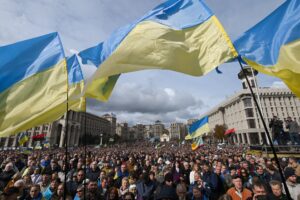The explorer Hiram Bingham, when he found the Inca citadel, believed he was in the presence of the lost city of Vilcabamba, the last Inca fortress. What he never imagined is that he was facing one of the most amazing discoveries on the American continent. The explorer witnessed one of the most wonderful landscapes in Peru covered by thick vegetation. Not only that, but he was also one of the first foreigners to behold this wonder of the world. But what is the meaning of Machu Picchu? Together with Machu Travel Peru, we will strive to give you the meaning of the legendary name that this wonderful lost city has. Therefore, we want you to know everything about this wonderful place. Machu Picchu was a mystical citadel that is on every traveler’s wish list. Sure, it indeed is one of the most impressive views in all of South America. But do you really know what this wonder of Inca architecture is about? This and more we want to delve together with our team. Why was it built? For what purpose? And what is the meaning of Machu Picchu? We want to answer these well-known questions.
What does Machu Picchu mean?
- What is the meaning?
- Who named the archaeological complex?
- What is the true name of Machu Picchu?
- What Machu Picchu means in the culture
- Machu Picchu location
- The purpose of the citadel
- Machu Picchu in contemporary times
What is the Meaning?
But then, what is the meaning of Machu Picchu? Machu Picchu is an original word of the language known as Quechua. The literal translation of Machu Picchu is “Old Mountain”. Machu translates to Old while the meaning of Picchu can vary. This can mean Pyramid, Mountain, or Chewed Coca Leaves. That is why if we are left with “Old Mountain” we are falling short with the translation. Therefore, we must learn a bit about the cultural and religious context of the Incas. Beyond the name that the Incas gave to Machu Picchu, this site had great importance. It was considered a sanctuary, a resting place, and a pilgrimage destination among many other functions. Besides, Machu Picchu is the contemporary name by which the wonderful citadel is known. This name in Quechua by which the wonderful complex is known is not original. It is the contemporary name with which the explorer Hiram Bingham came across. Machu Picchu is the way to describe the citadel built between the mountains Machu Picchu and Huayna Picchu. Note that the citadel was abandoned in approximately 1535 to be rediscovered in 1911. An extensive period passed between which there are no written records. Today we only have the wonderful views and Inca ruins to appreciate. One of our main tips for planning a trip to Machu Picchu would be to book in advance. The popularity of the complex means that tickets are not always available.
Who Named the Archaeological Complex?
Machu Picchu was the name given by the North American archaeologist Hiram Bingham. Based on the interviews he gave to National Geographic about the discovery of the complex, the following data can be highlighted. Upon his arrival in Peru in 1911, Hiram Bingham was looking for what he called “The Golden City of the Incas.” The inhabitants of the surrounding areas made him aware that at the bottom of the Urubamba Valley there was an abandoned Inca city. This uninhabited city was nicknamed “Machu” due to how old and abandoned it was. And after its discovery, the Peruvian State provided documents to carry out studies within the Inca site. It was there that he found evidence from Rodríguez de Figueroa indicating that the mountain already had its own name. The mountain used to be called “Pijchu”. So the explorer Hiram Bingham only combined these two expressions to name the complex as “Machu Picchu”. Today you can enjoy a wonderful tour of the complex and its history. There’s no best time to visit Machu Picchu, it will all depend on how you want to approach your adventure and your budget.
What is the True Name of Machu Picchu?
First of all, it is important to know who Juan de Betanzos was. Since it is crucial within the history of the Inca complex. Juan de Betanzos was a Spanish explorer and chronicler who accompanied Francisco Pizarro and Diego de Almagro. He accompanied them during what was the conquest of Peru where he learned the official language of Quechua. This was the official language of the Incas and that is how Juan served as an interpreter. It was after Atahuallpa’s death that Betanzos made friends with the Inca nobility. He even had a loving relationship with the Inca’s wife. And it was thanks to these friendships that the book “Sum and narration of the Incas” emerged. These writings originate from the 16th century and are one of the first narratives that tell the history of the Inca Empire. But why were these historical writings never known? Because the writings of Juan de Betanzos were in Spain. It was not until 1987 that the historian Maria del Carmen Martin Rubio discovered about 18 chapters that were part of the Betanzos chronicles. These were in the State Public Library in Palma de Mallorca, Spain. And based on the investigations that this historian did, it is known that the true name of Machu Picchu is “Patallaqta“. As evidence of this, conversations that Emperor Atahualpa had with the royal panaca just before his death have been described. Within the conversations, it is stated that Atahualpa’s last wish was to be buried in “Patallaqta.” Making mention of a city located in the mountains. Patallaqta is a Quechua word that is made up of two words. “Pata” could be translated to “Step” or “Platform” while “Llaqta” translates to “Town”. So “Patallaqta” could be translated into something like “City of platforms or steps”.
What Machu Picchu Means in the Culture
The archaeological complex means a lot within the Peruvian culture. Since the Inca citadel represents the Incas’ great ingenuity and an unbreakable cultural legacy. A clear symbol of the strength of the Peruvian ancestors and their passage in the ancient world. The meaning of Machu Picchu can be seen not only in our contemporary times but also in the past of the Incas. For them, it was a sacred and exclusive place where they worship the deities. So exploring the meaning of Machu Picchu is taking a trip back in time. You may be lucky enough to know a little about this incredible place within the different Machu Picchu tours.
For the Incas
Machu Picchu served as a sacred enclosure since during its heyday it had the main function of being a space for the worship of gods. The evidence that supports these sayings is found in the writings made by Garcilaso de la Vega. Within “The Royal Commentaries of the Incas” the citadel is described as an enclosure to worship the four elements. Even other entities such as animals and stars were worshiped in the place. As they were also considered gods by the Inca culture. In addition, in the Inca citadel, there are several worship temples.
For the Inca Royalty
Machu Picchu was not only a place of worship, it was also a mausoleum for the Royal Panaca. So it had a strong meaning for royalty since it was considered a resting place before leaving for the world of the dead (Hanan Pacha). In addition, with the discovery of the citadel, numerous Inca corpses were found outside the city. But the mummies of the Inca governors were not found. In Garcilaso’s chronicles, it is mentioned that the bodies of the Inca rulers had been looted.
For Peruvians
Today, the meaning of Machu Picchu involves much of the cultural identity of Peruvians. It is a symbol of creativity, strength, and resourcefulness. And as evidence of this, his people continue to practice traditions that endure over time. Thanks to this unique culture and wonderful ruins the country receives numerous recognitions. And since the citadel has been named one of the 7 Wonders of the Modern World, Peruvians have sought to improve. From its attention services to its infrastructure and thus receive a greater number of visitors. This is a great incentive for locals to make their way in different areas of the tourism sector. So that they can produce great revenue for the country and create new opportunities in the process while envisioning a bright future.
Machu Picchu Location
This is located in the middle of the Peruvian Andes, to be specific about 80 kilometers (50 miles) northwest of Cusco. This lost city was discovered in 1911 on a scientific expedition by Hiram Bingham. This incredible 15th century Inca citadel sits 2,430 meters on a narrow ridge above the Urubamba River. It is considered by many to be the best-known archaeological site on the entire continent. And it is one of the attractions that you cannot miss within tourism in Peru! So why don’t you take a luxurious tour to Machu Picchu? You can do it through an exclusive train trip or on a hiking trail with all the comforts. In any case, you will be surrounded by beautiful landscapes and scenarios of the imposing Andes mountains. Stay with us to explore the meaning of Machu Picchu.
Reasons for Its Location
And for what reason was it built in that location? The truth is, there is no specific reason. But numerous factors can help us discern the reasons why this wonder was built there. In the location of Machu Picchu, there is a spring that provides water to the citadel. In addition, it is known that the cult of water was an important part of Andean spirituality. Other reasons may involve the strategic location of Machu Picchu. It offers views of the surrounding valleys while it is impossible to view it from below. Not to mention that Machu Picchu enjoys a pleasant and temperate climate, making it an ideal place for cultivation. Although it is also taken into account that the Incas considered the mountains as protective spirits. The location of Machu Picchu represented sacred geography and an environment conducive to spirituality. In addition, the images of the Puma and the Condor appear almost naturally in the mountains. It is even believed that the Machu Picchu map was built to resemble the figure of a condor.
The Purpose of the Citadel
It was considered by historians as a political, religious, and administrative center. But new theories suggest that it was a royal state designed by Pachacutec, the Inca sovereign whose conquests transformed the Empire. Some roads connect it with the city of Cusco and important jungle sites. Since the Spanish invaders never discovered it, expert historians still question when it was abandoned and why. Among the different Machu Picchu facts to know, it is believed that the complex may have had up to 500 inhabitants. It is a marvel of engineering, its incredible Inca walls have giant stones polished without mortar in between. Its construction is estimated to have taken about 50 years and hundreds of workers. Its construction today would exceed a price of 50 billion dollars.
Machu Picchu in Contemporary Times
Today Machu Picchu is one of the greatest treasures of Peru. Beyond the meaning of Machu Picchu, the complex is a popular tourist center. If you want to visit Machu Picchu, you will not have major inconveniences. Although we strongly recommend that you book your tickets in advance. This site is visited by thousands and thousands of tourists a day. So its availability is not always guaranteed. Especially if you plan to travel on an impromptu basis. Today it is relatively easy to get guided tours to explore this wonder of the world. If you wish, you can consult our advisers to guide you on the best way to travel. But visiting it independently is not difficult either. With the facilities offered by the government, you can visit the ruins independently. Although it is true it may take longer to find good reservations and organize yourself with the schedules. If you are looking to learn more about the history of the archaeological complex, you can visit the nearby site museum. It is located a few meters from the entrance and is an excellent alternative to complement your tour. The museum offers a few extra explanations about the discovery of the citadel as well as the objects found in the vicinity. If you have time, it can be one of the many things to do in Machu Picchu.
Together with Machu Travel Peru, we hope we have helped unveil the meaning of Machu Picchu. Although the best way to discover the meaning behind this wonderful complex is with a guided tour. Within a tour, you will learn about the wonderful history that surrounds the citadel. This is not to mention the number of views and buildings that await you to contemplate. There is no doubt that this site is on the wish list of many travelers. So if you are looking to enjoy a beautiful tour, we recommend that you start reserving your tickets. We hope this article has encouraged your future desire to explore one of the most precious archaeological treasures of Peru. If you want to know more about our tours, you can consult with our team of qualified advisers. They will be happy to help you fulfill the trip of your dreams. Peru has so much to offer, it can be hard to know where to start. With many years of experience in the tourism sector, Machu Travel Peru is happy to help with anything regarding your trip to Machu Picchu and any tours around it. Make your Machu Picchu experience an unforgettable one!
Source: Machu Travel Peru











